By Heather Rock Woods and Zach Jones
The community of student researchers that Harker started building with its first research symposium in 2006 showed up in full force for the 10th annual event on April 11 of last year.
“We had a record number of student posters, student talks and exhibitors,” said symposium founder and director Anita Chetty, upper school science department chair. “The skills we’re teaching [students] about scientific research, they will take with them for a lifetime even if they don’t end up in a lab.”
Chetty cited the excitement of the teachers, staff, students and parents for expanding and sustaining this annual celebration of discovery and innovation.
A Celebration of Success
The Harker Research Symposium is in many ways a celebration of the achievements of Harker students in the school’s research program. During her tenure as head of school, Diana Nichols dreamt of a program where real scientific research could take place.
“Research is really where the vast majority of scientific information comes from,” she said. “What we wanted to do, particularly once we had a high school, was to provide some real opportunities to do research-style science.”
Earnest talks for a research program started some time after Anita Chetty joined the Harker faculty in the fall of 2001. “By this time I knew her to be an extraordinarily capable teacher,” recalled Nichols. “I also understood that she had the kind of personality that sees a target and says, ‘OK, I want that,’ and knows how to turn it into a reality.”
Evidence of the research program’s success came as early as the 2005-06 school year, when Christopher Sutardja ’06 became Harker’s first regional semifinalist in the yearly Siemens Competition. That same school year, Yi Sun ’06 went all the way to the national finals of the Intel Science Talent Search, placing second overall.
Chetty, however, felt that it was also key for students to have experience presenting their research to the scientific community. “She wanted to have a forum where she could present student work, she could present work that was being done in the outside community, and have those two worlds come together,” said Nichols.”
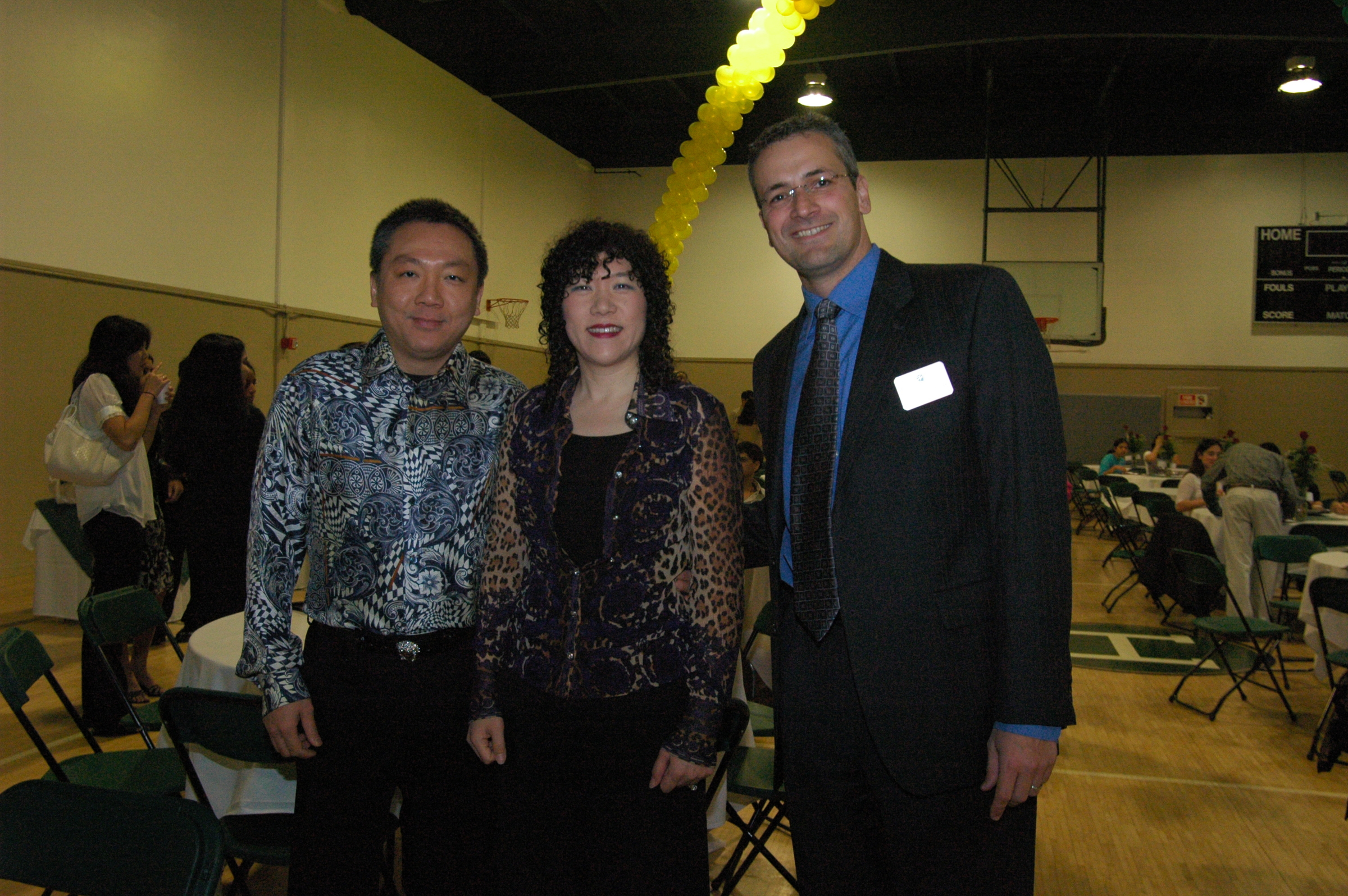
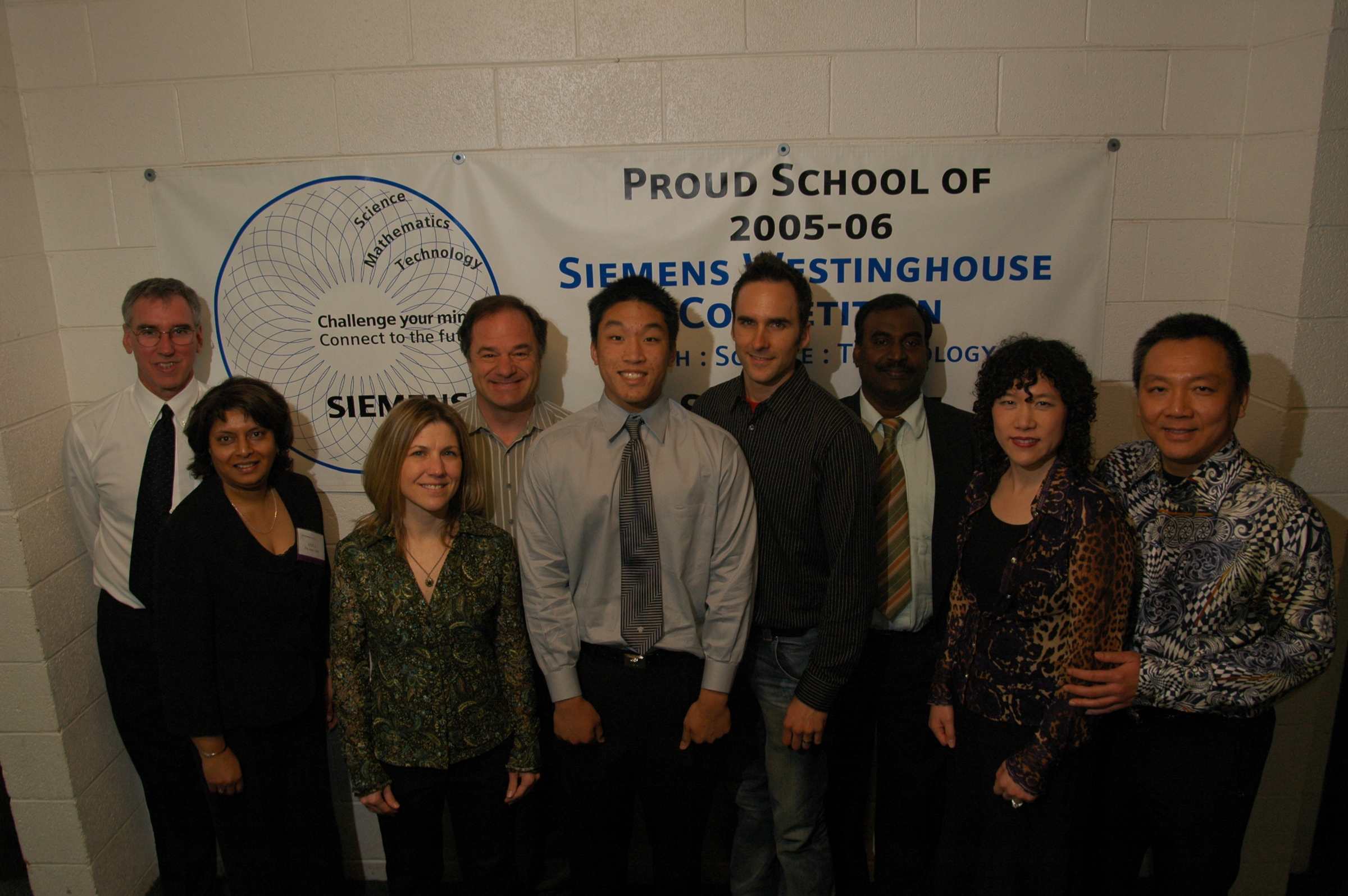
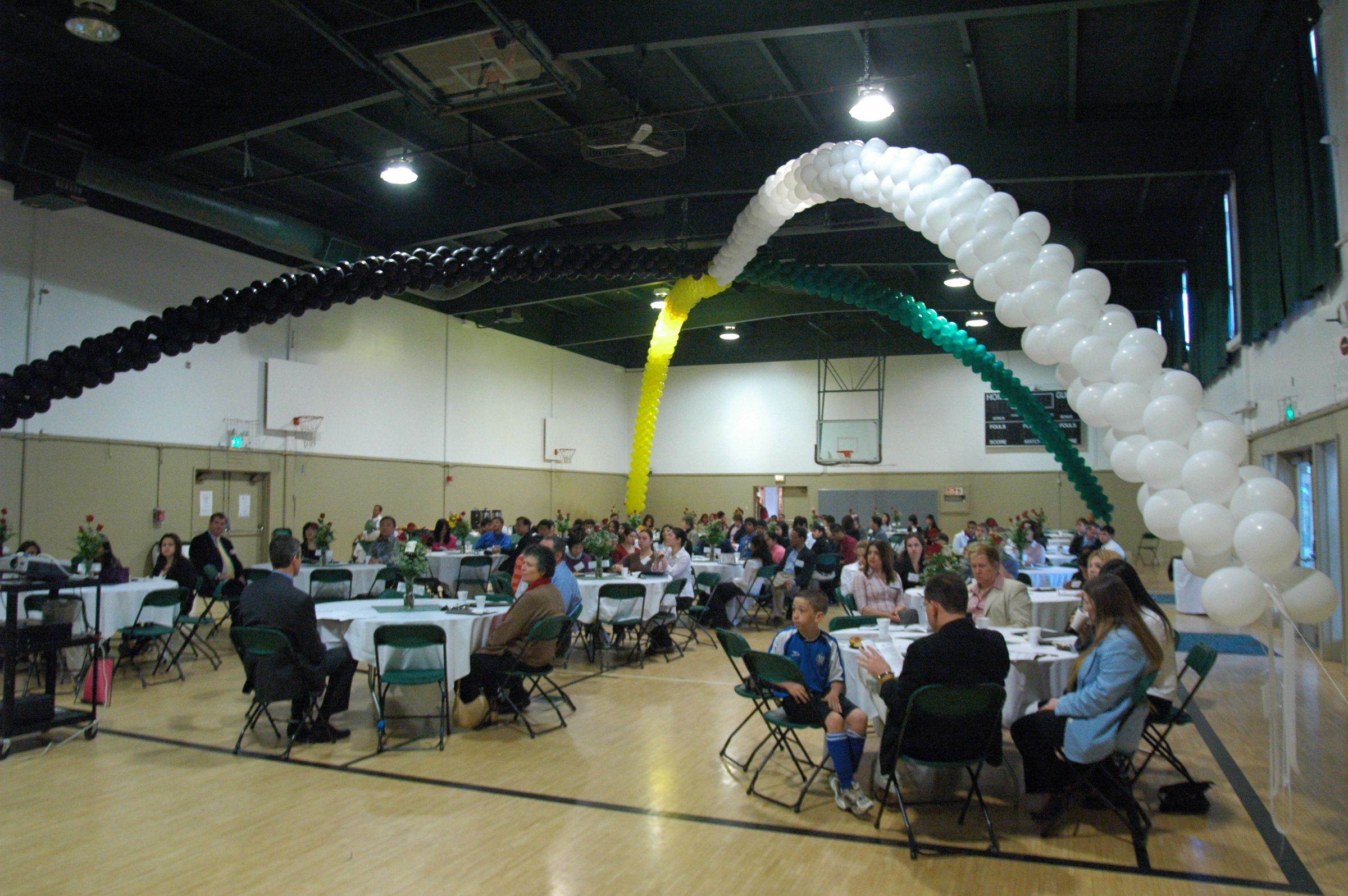
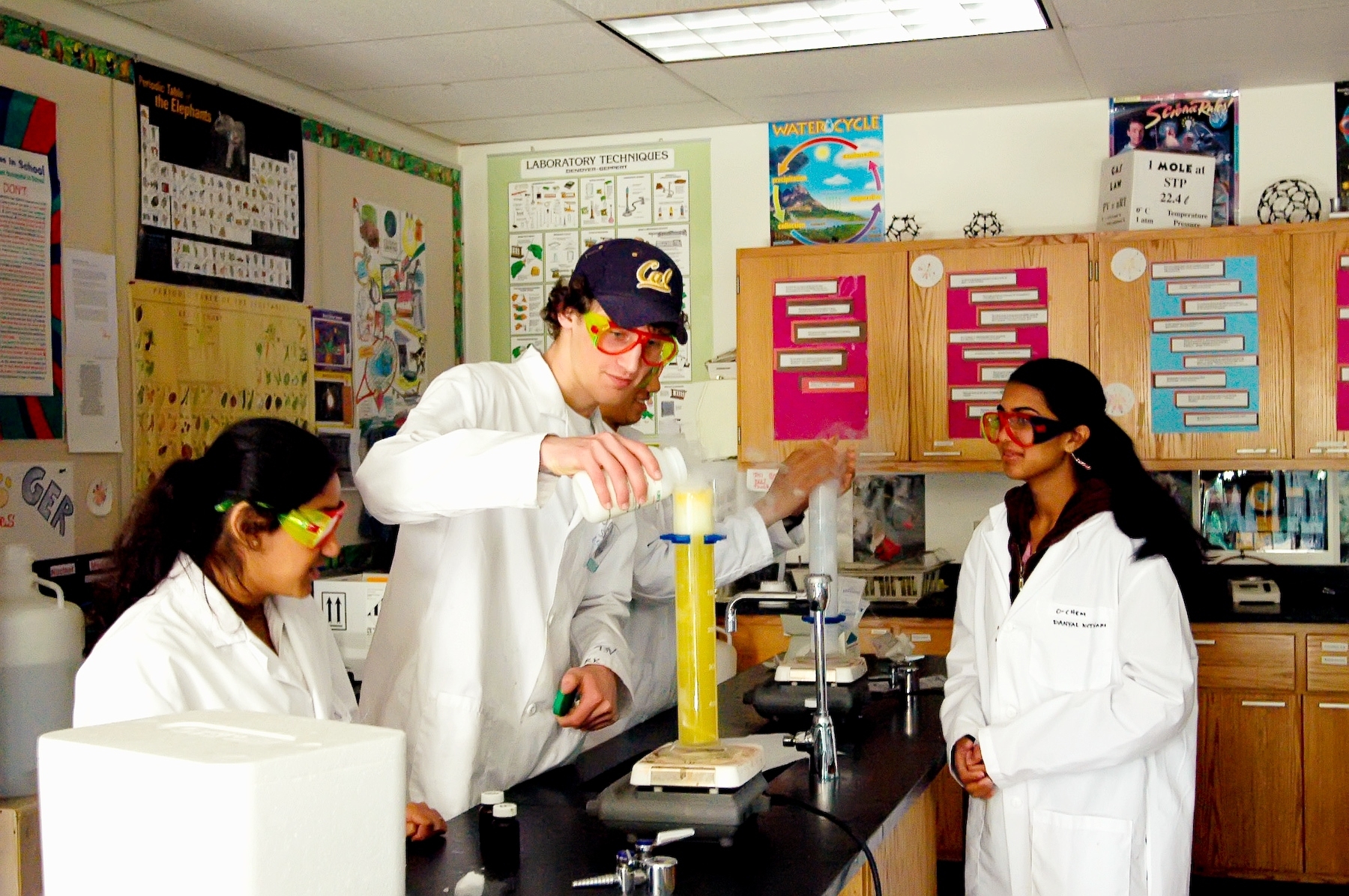
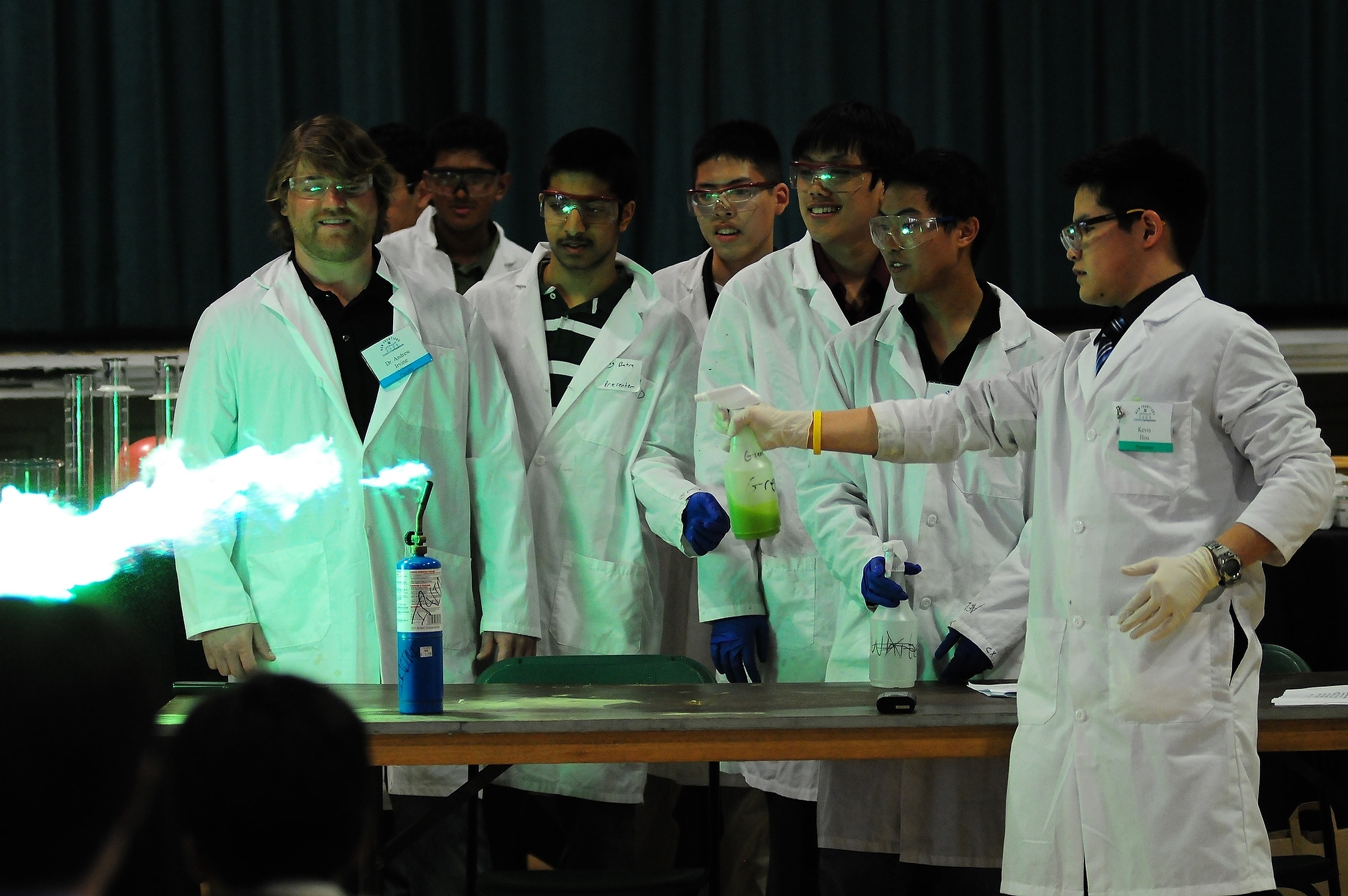
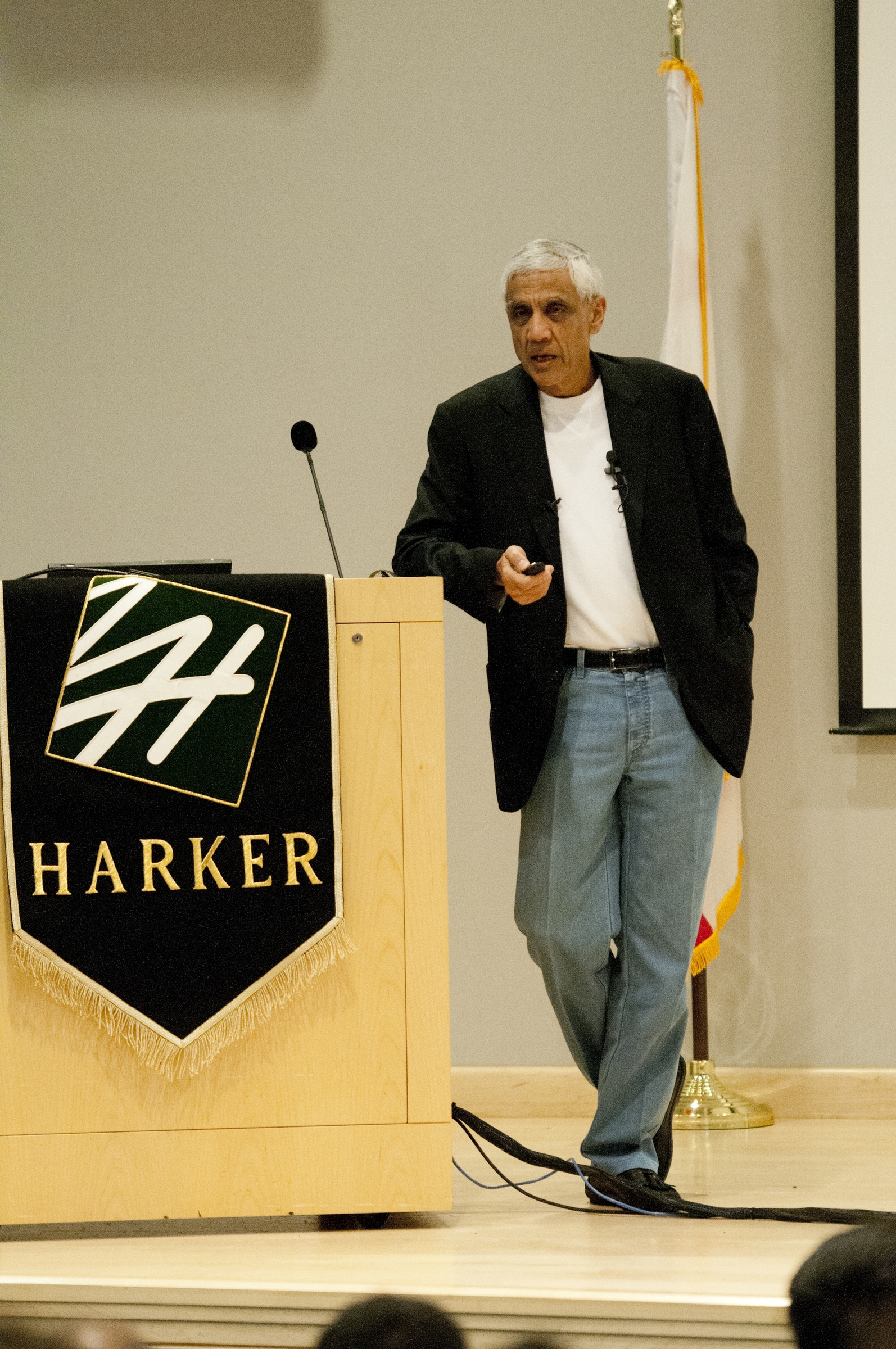
“The research symposium is first and foremost a science conference,” said Chetty. “It’s an opportunity for our students, through poster sessions, as well as talks, to share with the community the research that they’ve done throughout the year.”
It’s also an opportunity for students to interact with practicing, professional scientists. This piece of the symposium, Chetty said, helps students “understand what the connection is between research and development and our economy. They are able to look at career options as well. They’re perhaps able to find a mentor.”
Another key component of the symposium is, of course, simply enjoying the experience of being immersed in the sciences. “For both our parents and our students, it’s a total immersion in STEM activities,” Chetty beamed. “And it’s filled with not only activities that they can directly participate in, it’s also through the keynote speakers. It’s also an opportunity for them to reflect on the impact of science and research on society, on politics, on the law.”
With the 2008 opening of Nichols Hall, the symposium has gained a dedicated space to show the scope of student research going on at Harker, as well as increasing the overall size of the event. The gym is now dedicated to showcasing the work of Harker’s middle school students, who are often seen excitedly explaining their work to the many attendees.
Diana Nichols credited the growth of the symposium over the past decade to both the opening of Nichols Hall and to Chetty’s dedication and savvy. “She doesn’t punch a clock. She works 24/7,” Nichols said. “She knows how to interact with people, with students, with teachers, with researchers.”
Indicative of this is the impressive array of guest speakers that have appeared at the symposium over the past decade. Notable appearances in the last few years include entrepreneur Vinod Khosla, Nobel Prize winner David Baltimore, UC Santa Cruz astronomer Claire Max and Khan Academy founder Salman Khan.
Community-Minded
Last year’s event attracted about 450 to 500 people, including the community-minded Jin family. Shu Jin helped for months as a parent outreach coordinator for the event. His son Andrew, a 2015 graduate, presented his first-place work from the nationwide Intel Science Talent Search (STS). Andrew’s sister, Amy, grade 10, is also a researcher and a member of WiSTEM (Women in Science, Technology, Engineering and Mathematics), the club that helps organize and run the symposium every year.
Outfitted in white lab coats, members of WiSTEM (Women in Science, Technology, Engineering and Mathematics) and the Research Club introduced speakers and hosted the popular STEM Buddies stations, where kids viewed EEG images of their brain waves, rolled marbles onto a blue fabric representing space-time and much more. In addition to the talks, attendees flocked to interactive booths set up by the exhibitors including Google, IBM, mCube, Nod Labs, NVIDIA, Palo Alto Medical Foundation/Sutter Health, Tesla and more.
As the symposium has grown over the years, so has the stature of research done by Harker students. In 2015, 15 Harker students were named Intel STS semifinalists and three, including Jin, were finalists. In the most recent Siemens Competition, 13 students were California semifinalists and four of them regional finalists.
“Getting the opportunity to see all the incredible projects that the kids have done is really phenomenal,” said Harker alumna and keynote speaker Shabnam Aggarwal ’03, who graduated before the event existed. Aggarwal is now the CEO and CTO at Delhi, India-based KleverKid, which helps connect students with after-school programs, activities and coaches.
Steven Wang ‘15, one of 24 student speakers and one of the three 2015 Intel STS finalists, used computer methods to find a new gene associated with colorectal cancer and then tested the mutations in microscopic mini-organs in a Stanford University lab. “I got to be on the forefront of organoid research and run my own experiment,” he said. “The lab niche was very fun. We ate lunch together and watched movies.”
One 2015 Siemens regional semifinalist, Ankita Pannu ‘15 tackled the lack of organization in online cancer support group discussions. “My main engineering goal was to help patients gather information,” said Pannu, who developed an algorithm to summarize and categorize information from posts. With no prior background in text mining, she asked for an informal internship at IBM’s research lab where a mentor pointed her in the right direction.
Throughout the 2015 daylong symposium, middle and upper school students showcased their endeavors in more than 50 displays on categories including engineering, nanoscience, microbiology, environmental science, bioinformatics and behavioral science.
Amy Dunphy, now grade 9, purified the allergen in poison oak and worked on polymerizing it into a bigger chain of molecules to prevent transmission through the skin. She contracted the rash a few times in the name of science, but nodded yes without hesitation when a noted professor asked if she wanted to be a scientist.
Speakers Share Knowledge
That professor was keynote presenter James McClintock, the endowed university professor of polar and marine biology at the University of Alabama at Birmingham. “Antarctica is one of the richest marine environments on the planet,” he said, but rapid warming from climate change is altering the local weather and conditions that populations have depended on for millennia.
As the annual sea ice disappears, so do krill. Adélie penguins are declining as unseasonably late snow melts and floods their eggs. Sub-Antarctic gentoo and chinstrap penguins have moved in, as have king crabs. Antarctic marine life has no defenses against crushing claws. “Communities always change, but over a few decades this is a profound change,” he said.
One of the repercussions could be the loss of medicinal chemicals; recent discoveries from Antarctic life include compounds active against cancer and H1N1 flu.
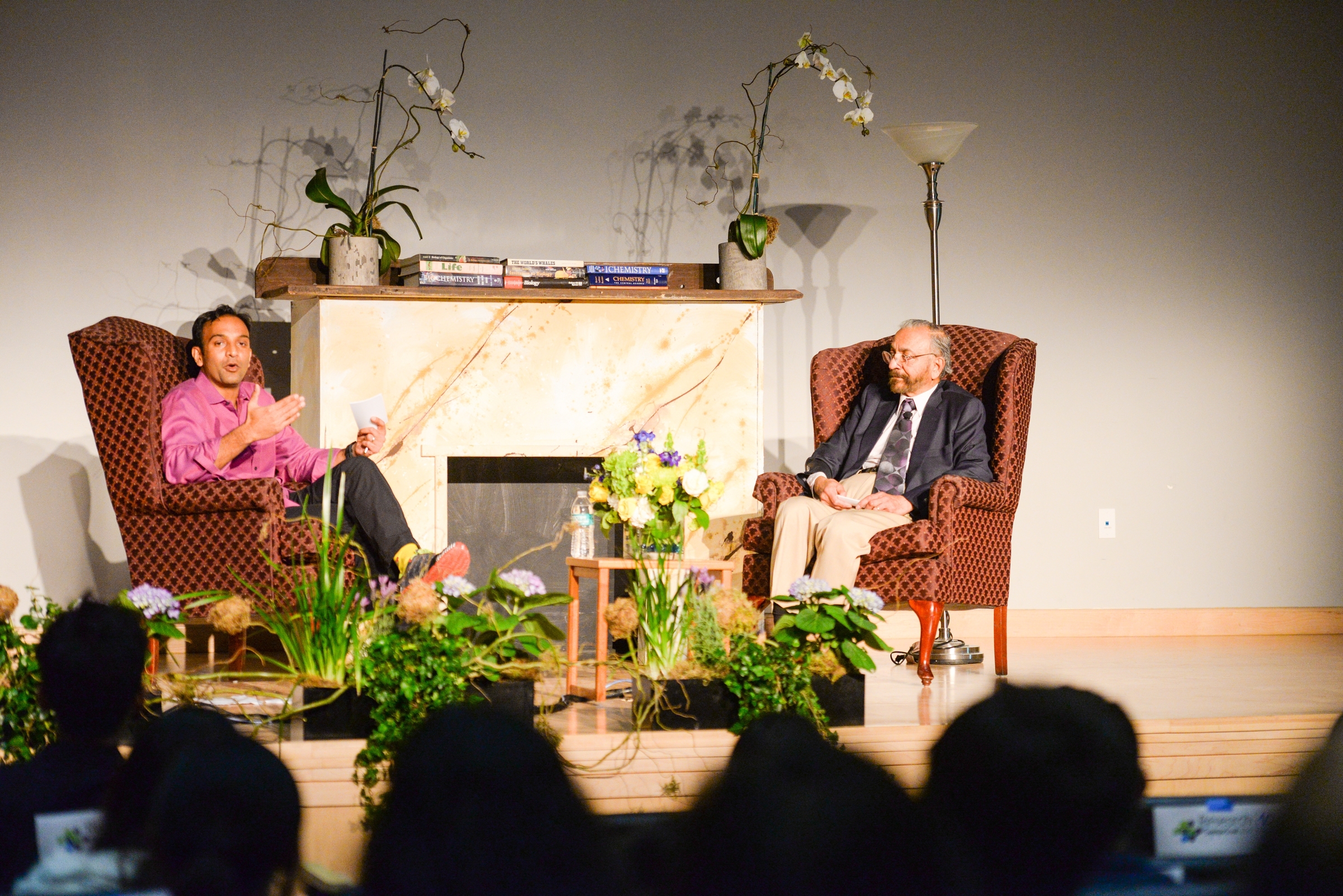
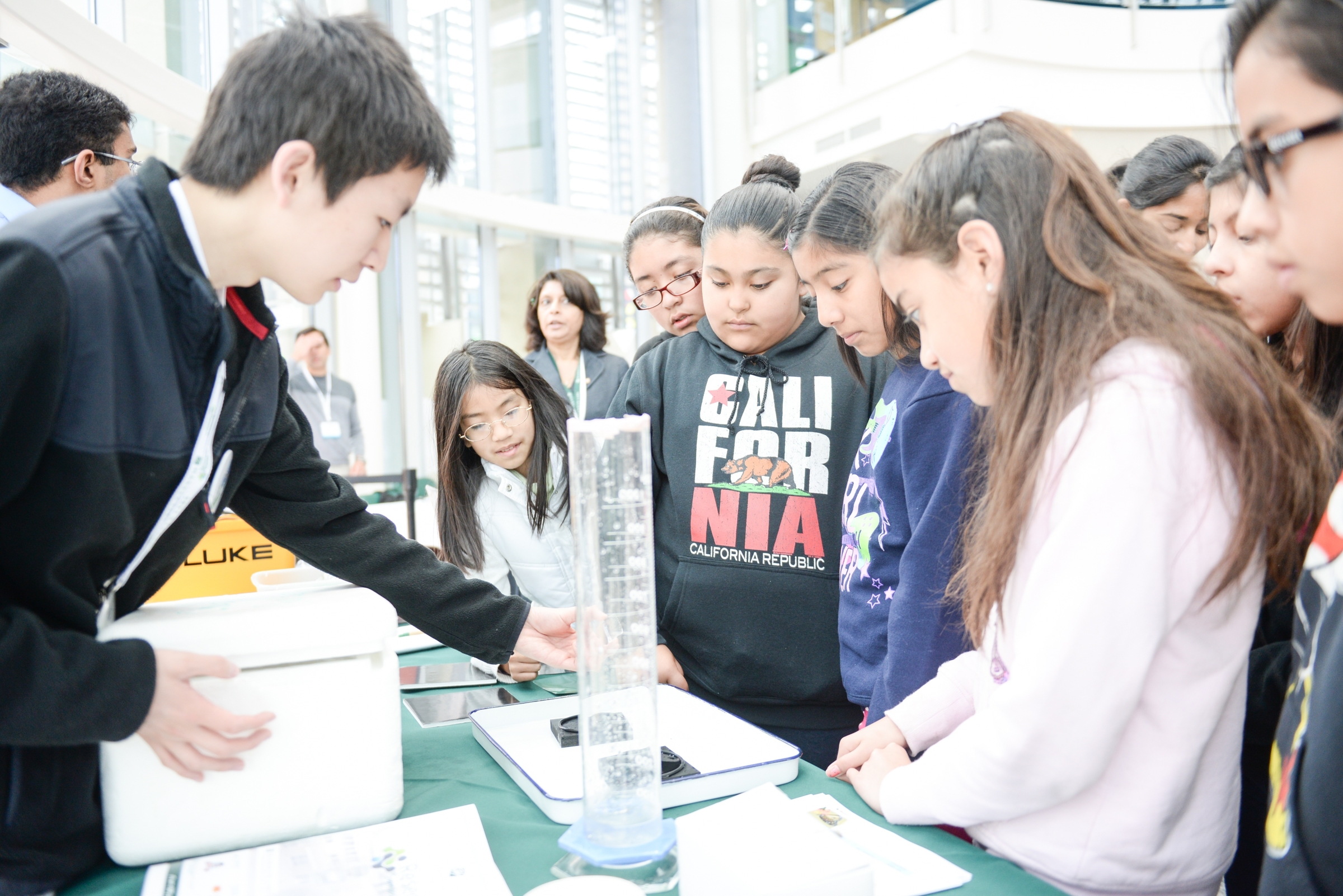
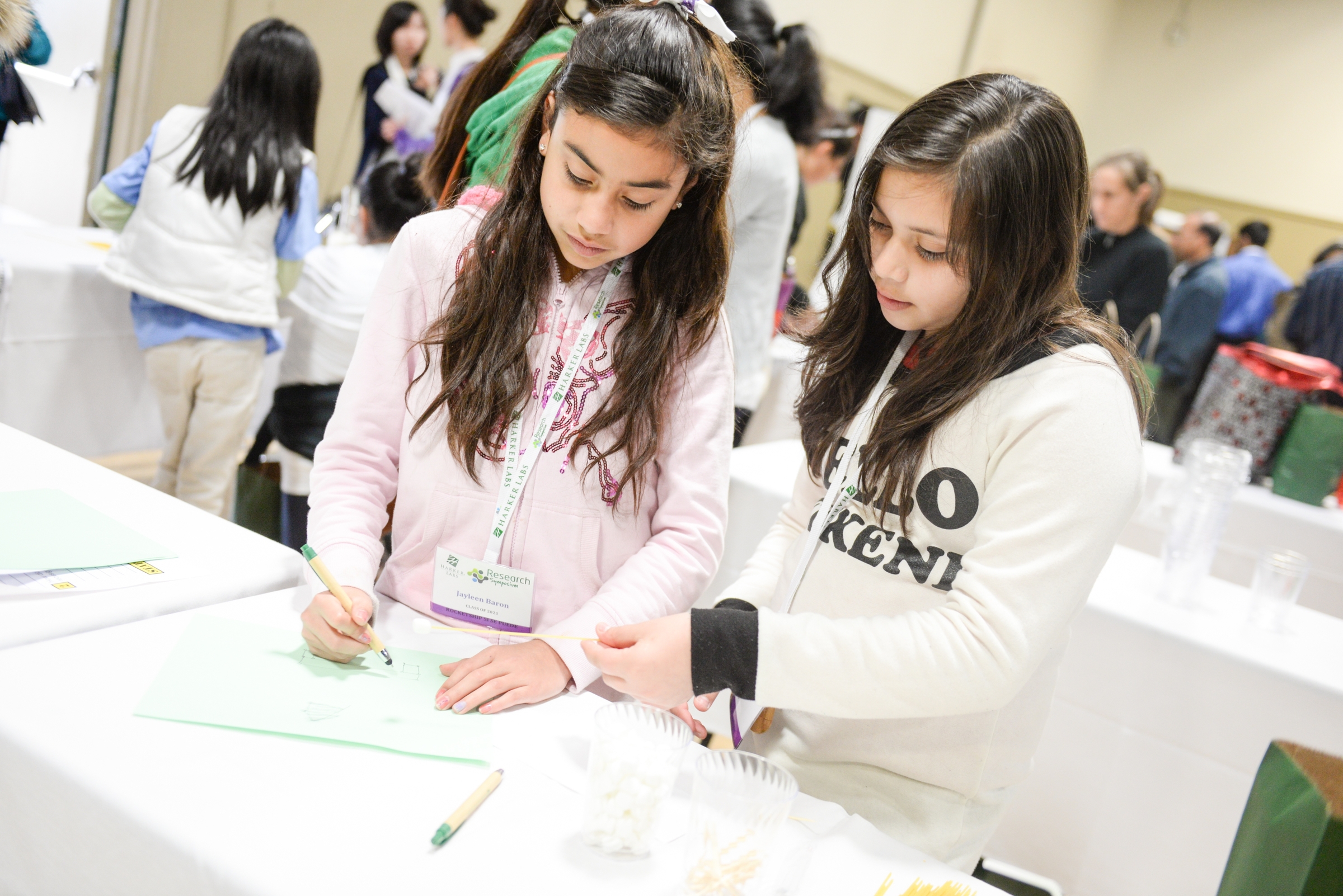
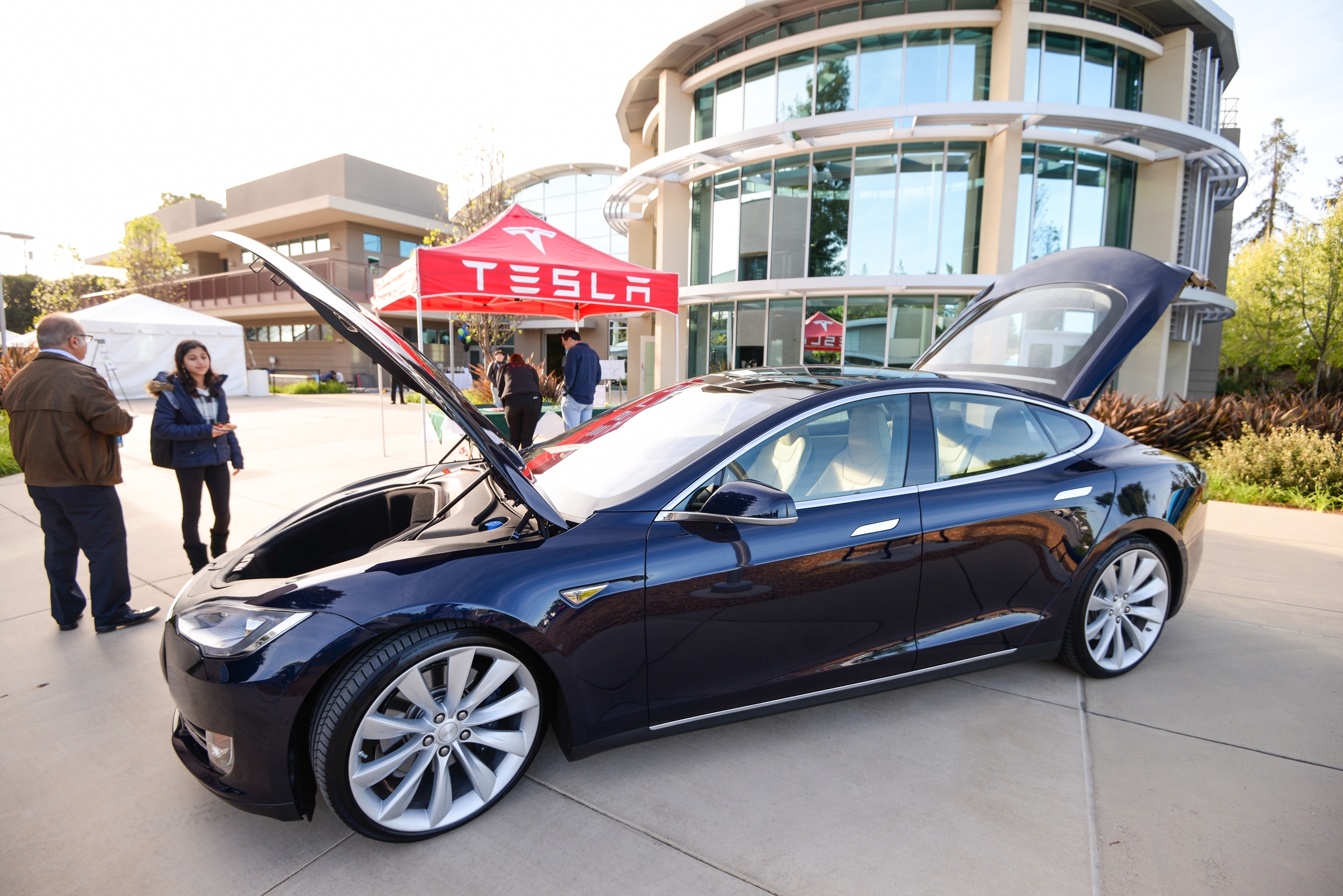
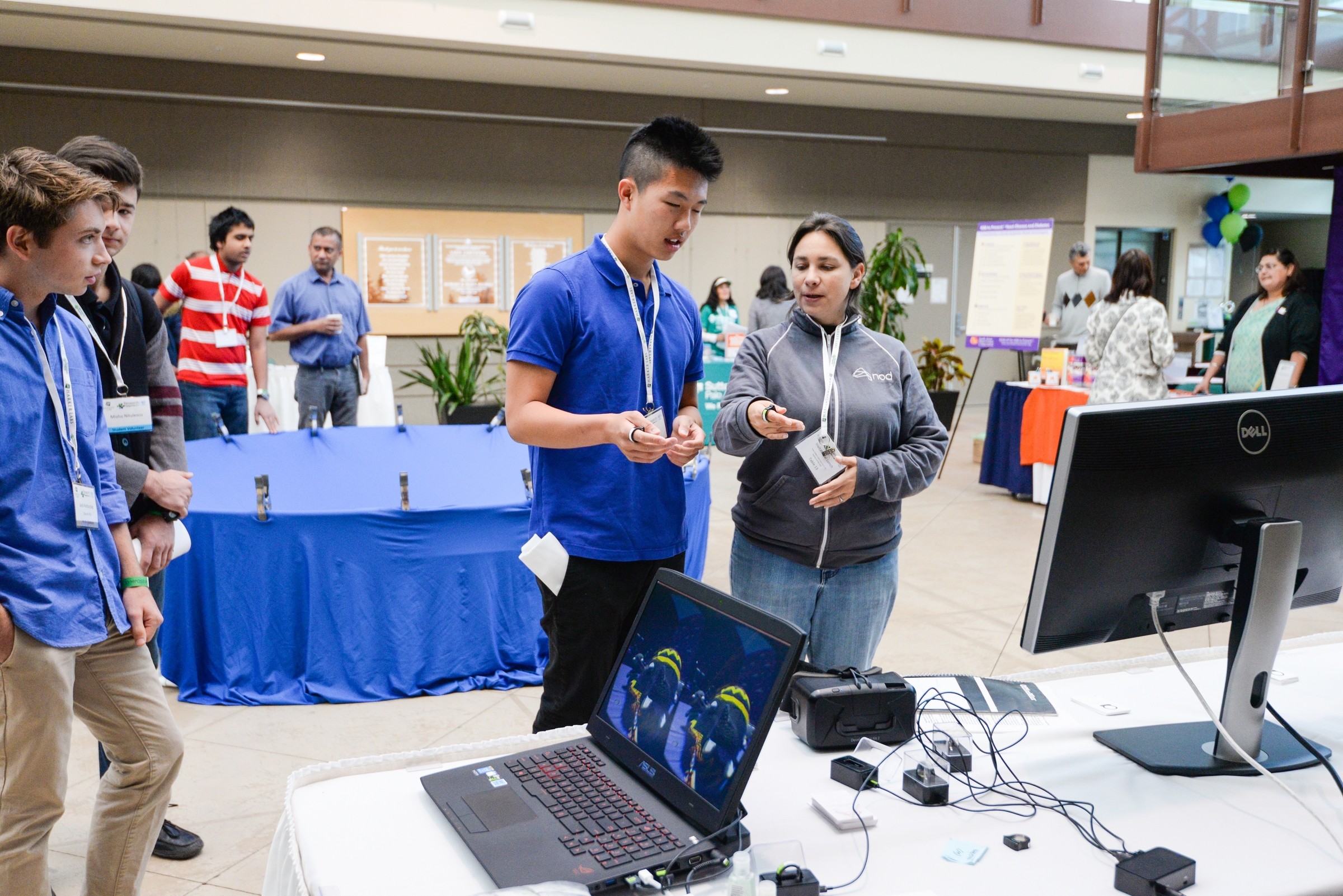
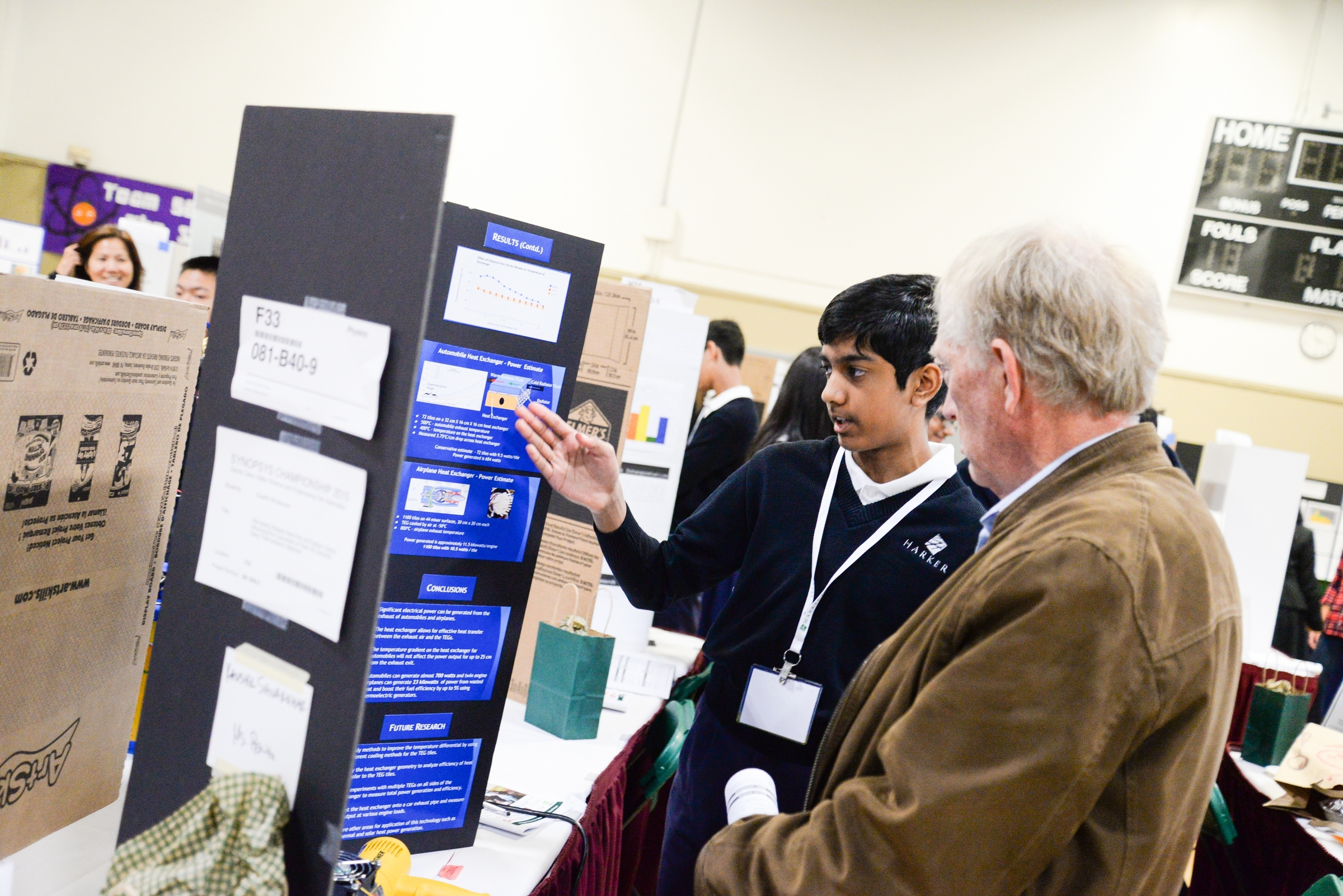
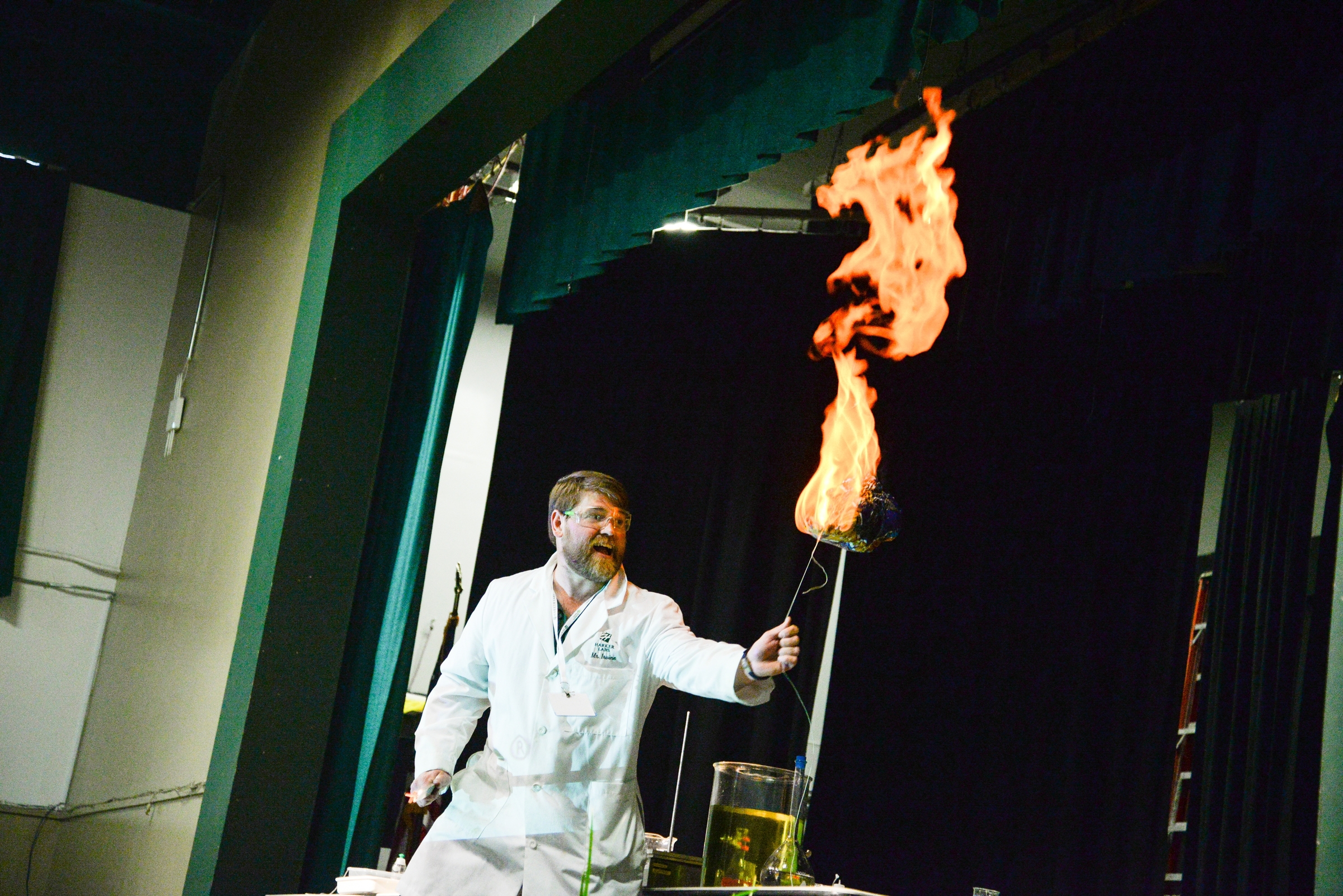
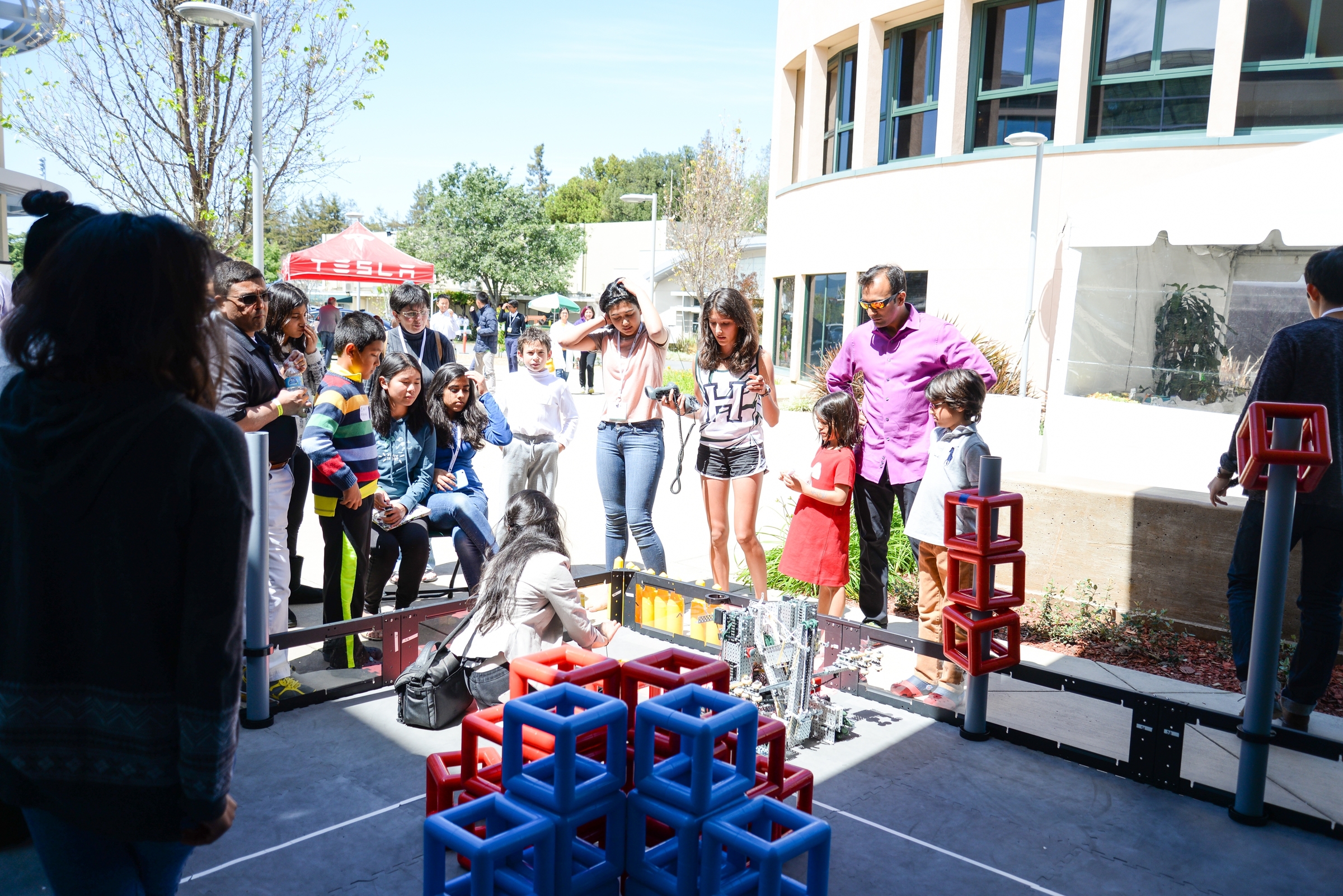
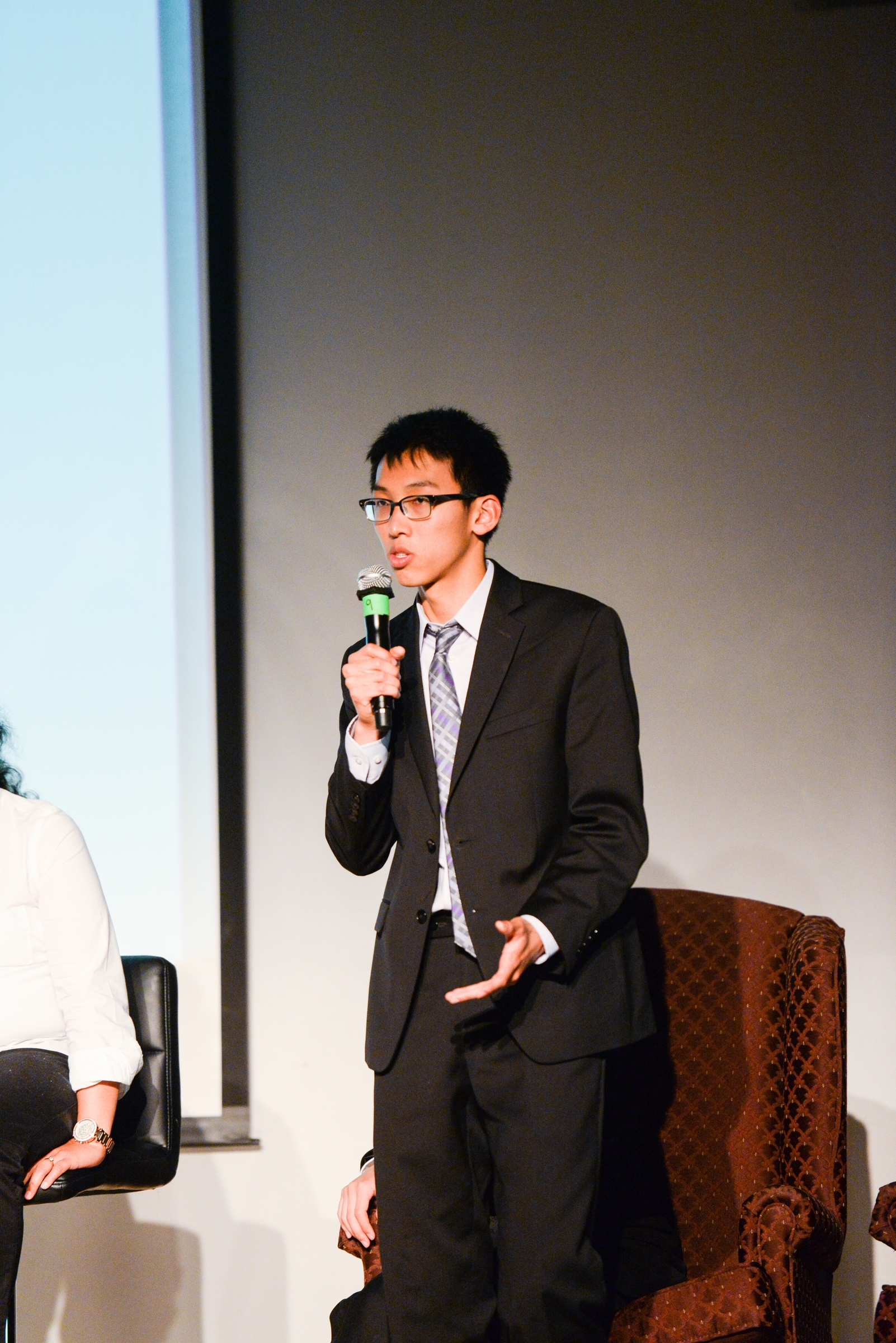
In the afternoon, father-son duo Suhas and DJ Patil had a “fireside” chat in wingback chairs in the auditorium, sharing their outlooks on education and entrepreneurialism.
Suhas, a former Harker parent (daughter Teja graduated in 2002), is the founder and retired chairman of Cirrus Logic, a semiconductor company. He’s seen in his son an example of where Silicon Valley is headed: “Our young people will need to get trained or they must train themselves to be very agile with respect to what they work on.”
DJ is the first chief data scientist at the White House Office of Science and Technology Policy, and co-coined the term “data scientist.”
“Stick to your convictions,” he advised, “but listen to people and outside views to course correct.”
In a special session, John Wolpert, IBM’s Watson evangelist, discussed the new era of cognitive computing led by systems like Watson that can learn from context and see patterns in fragmented, unstructured data. “It’s about extending the human capability,” he said, encouraging students to try solving problems with newly available Watson subsystems.
Watson algorithms have found new targets for cancer research and developed unique recipes praised by top chefs.
The second keynote speaker, David Mortlock, son of upper school statistics teacher Mary Mortlock, works at the White House as director for international economic affairs for the National Security Council. Both in responding to the recent Ebola outbreak and pressuring Iran through sanctions to return to nuclear negotiations, the U.S. government “really relied on research and development … to try and make the world a slightly more prosperous and safer place,” Mortlock said.
Having your proposals embraced by the president is thrilling, he said. “It takes guts to say, ‘I have an idea and people should listen to me.’ It’s really exciting to see [Harker students] doing the same thing here with your work and presentations.”
Harker Alumni Researchers Share Updates
From introducing underrepresented minorities to mathematical problem-solving techniques to undertaking lab work focused on better understanding the Ebola virus in West Africa, Harker alumni researchers are involved in numerous incredible projects. Read on for the latest updates.
Yi Sun ’06, Intel finalist, Second Place National
At the time of last year’s symposium, Yi Sun ’06 was a fourth year Ph.D. student in the mathematics department at MIT. “My research is in representation theory, a branch of mathematics which gives a precise algebraic understanding of the symmetries of a system. I am particularly interested in connections between these algebraic techniques and recent applications to statistical mechanics and high-dimensional statistics,” he said.
Sun also had been collaborating with fellow Harker alumnus Tatsunori Hashimoto ’07 on a project in machine learning. Outside of research, for the last several years Sun has been involved in teaching high school students at the Math Olympiad Summer Program. “This year, I’m helping organize MathROOTS, a new summer program at MIT (mathroots.mit.edu), to introduce underrepresented minorities to mathematical problem-solving techniques,” he added.
Aaron Lin ’09, JSHS regional finalist
Aaron Lin ’09 attended Harker’s middle and upper schools and had been living in Boston at the time of the 2015 symposium. “Though I didn’t qualify for Siemens or Intel, I learned a lot about research while at Harker and had a blast at the local Santa Clara science fair, the California state science fair and the JSHS [Junior Science and Humanities Symposia]. Since then, I’ve continued research. The summer after graduation, and again a second summer during college, I performed research in Mark Davis’ immunology lab at Stanford and co-authored a research paper there, which appeared in the Journal of Immunology in 2011,” he said.
At Princeton, he joined the virology and proteomics lab of Ileana Cristea during his sophomore year. “By graduation in 2013, I wrote a thesis and a first author research paper, which appeared in Molecular & Cellular Proteomics in 2013, and another co-authored paper, which appeared in Proteomics this year,” he recalled.
After college, Lin was accepted into the Ph.D. program in virology at Harvard, and is currently in his second year there. In December, he passed his preliminary qualifying exams and officially became a Ph.D. candidate. After rotating through a couple labs, he joined the lab of Pardis Sabeti in March 2014.
“Interestingly, I actually met [Harker senior and national Intel Science Talent Search winner] Andrew Jin, who joined the lab for a summer research project,” said Lin. “Though our expertise and research interests didn’t overlap much, I was blown away by his end-of-the-summer lab meeting presentation, and it’s pretty clear to everyone that Andrew will continue to succeed in the future. It’s been productive for me as well, as I have co-authored one research paper in mBio in 2015, have another co-authored manuscript in Cell under review and another co-authored manuscript in preparation,” he noted.
Shabnam Aggarwal ’03: Failure as a Means to Success and Happiness
Thanks to serendipity, hard work, passion – and most of all, failure – Shabnam Aggarwal ’03 is the happy CEO of the education technology company she started in India.
The alumna keynote speaker for the 10th annual Harker Research Symposium, Aggarwal assured parents and students that “failure is not a four-letter word. Failure is inevitable and failure is necessary.” It teaches resilience.
She experienced a rough academic patch in high school, but got into Carnegie Mellon and earned an electrical and computer engineering degree. Then she shocked her parents by quitting her high-paying job at Merrill Lynch on Wall Street to teach English in Cambodia to girls who had escaped the sex trade. In pursuing her passion for equality in education, she later had “six hard years in India,” trying everything from teaching preschool to designing cell phone games.
“I failed many, many, many times before arriving at this solution,” said about her Delhi-based business KleverKid, which works to bring the best teachers, coaches and tutors to the kids who need them most.
She asked parents in the audience to imagine sitting in the back of a canoe, letting their kids paddle even if they aren’t steering the way you’d advise. “Often they’re going to make the wrong decision, but what’s imperative for them to master is picking up again and doing it over and over until they succeed.”
Both of Aggarwal’s parents were in the auditorium, and she shared the stage with her dad for a few minutes. “Through all these zigs and zags she’s gone through, she’s never given up,” Avnish Aggarwal said. “The investors saw her passion and persistence.”
She returned the compliment. “There would be one less person in the world trying to make a difference if my parents and teachers had never given me the space to fail,” she said.
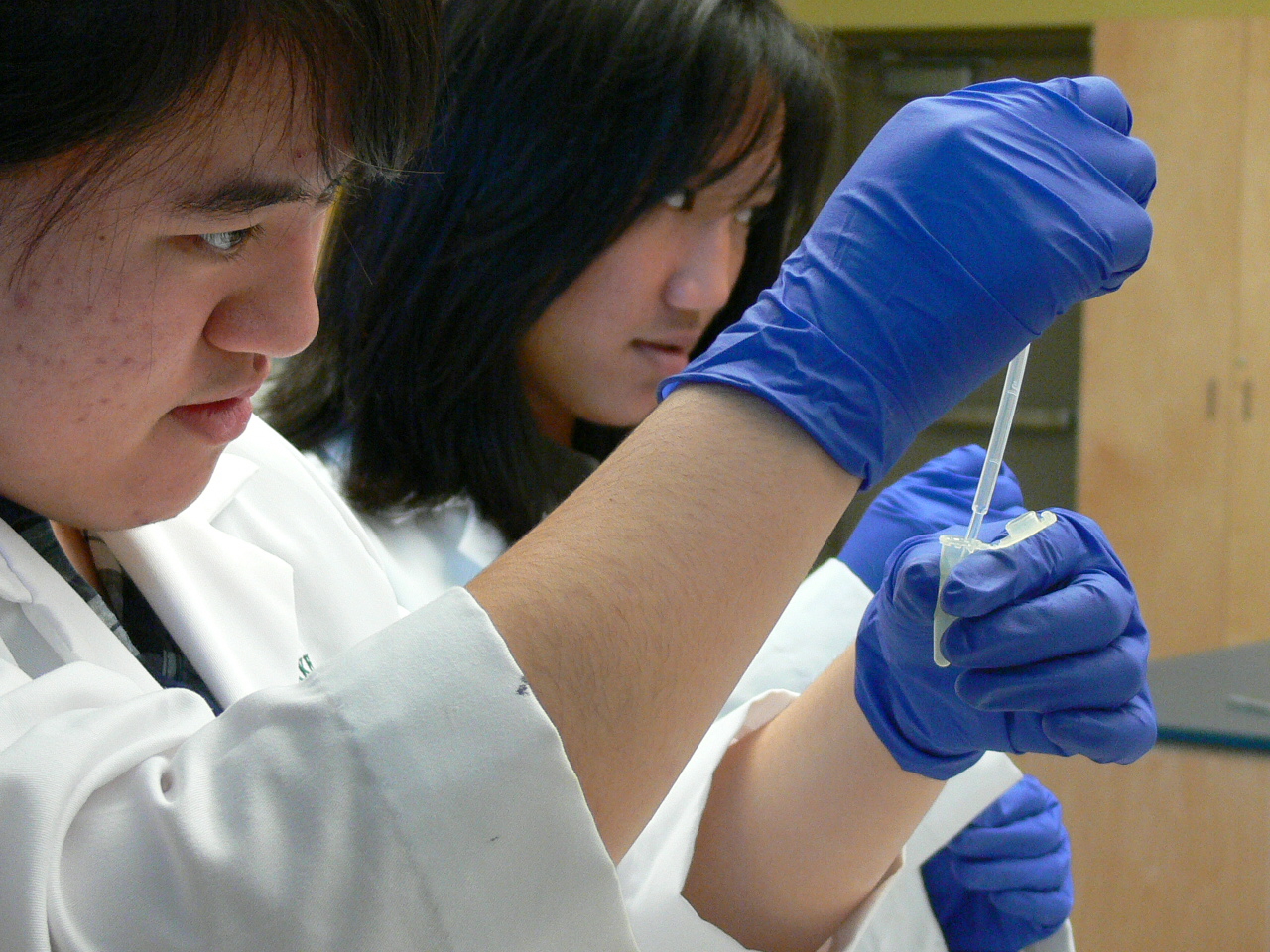
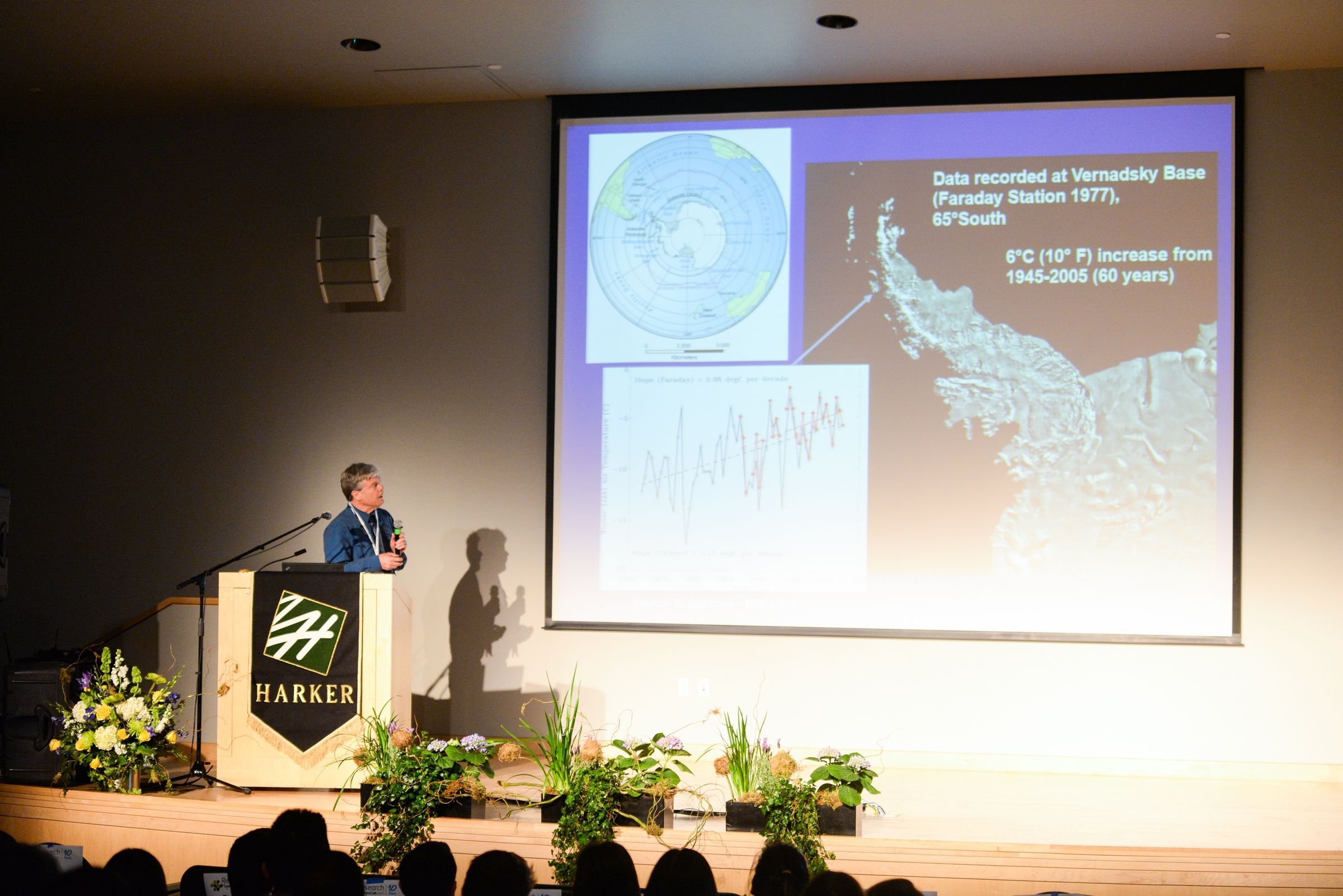
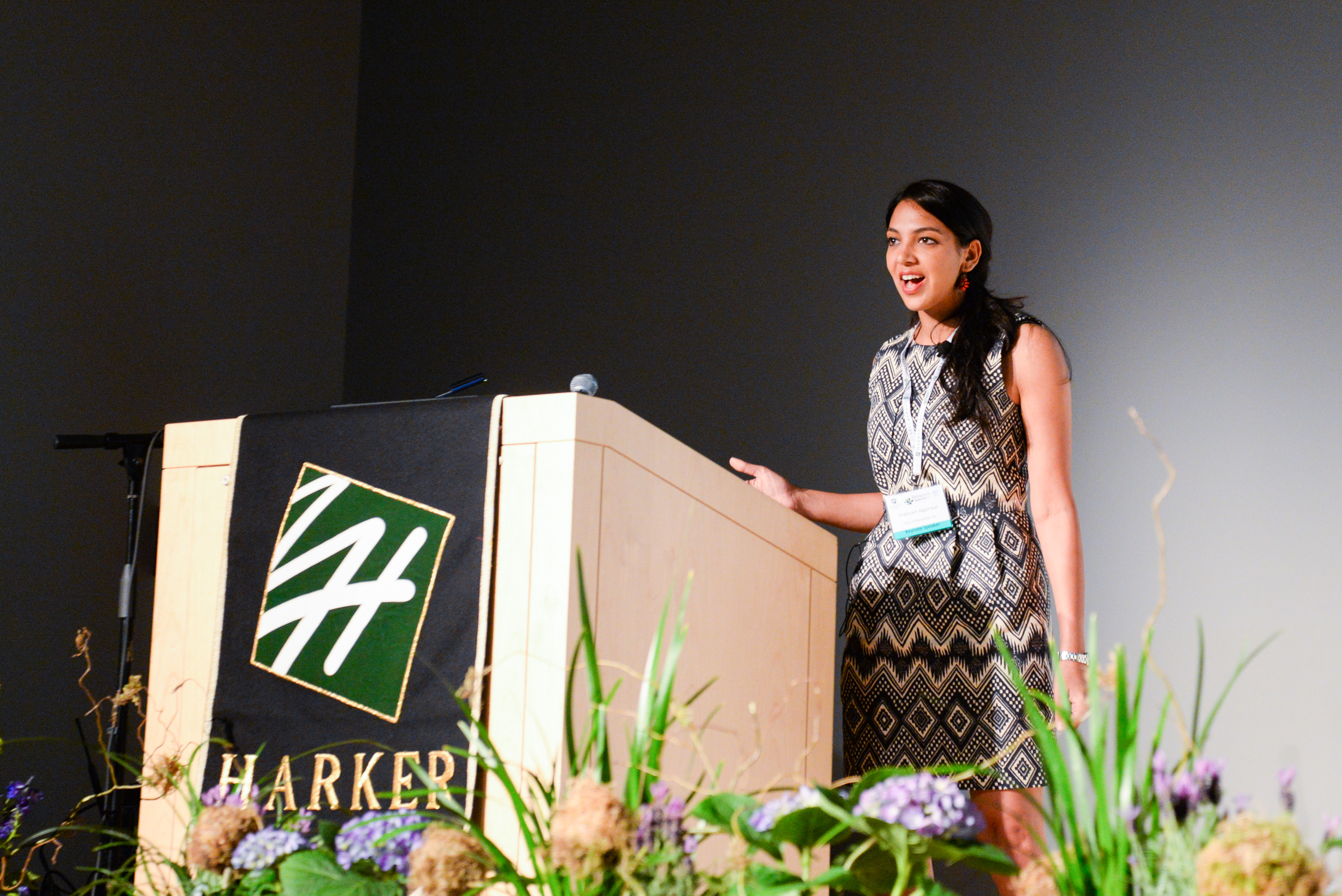
Previous Next